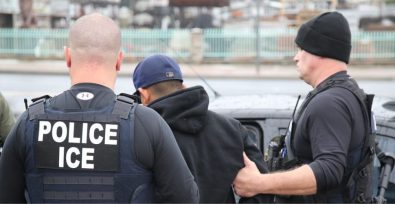There are a lot of dangerous misconceptions about sex trafficking that muddy the waters when it comes to prevention and protection measures to help survivors or potential victims. As Professor Corrine Shwartz notes in The Conversation,
The common perception of sex trafficking involves a young, passive woman captured by an aggressive trafficker. The woman is hidden and waiting to be rescued by law enforcement. She is probably white, because, as the legal scholar Jayashri Srikantiah writes, the “iconic victim” of trafficking usually is depicted this way.
This is essentially the plot of the “Taken” movies, in which teenage Americans are kidnapped abroad and sold into sexual slavery. Such concerns fuel viral posts and TikTok videos about alleged but unproven trafficking in IKEA parking lots, malls and pizza shops.
After years of research, Schwartz has found that these myths pervade even amongst frontline professionals, such as law enforcement, medical providers and even advocates. She’s given a breakdown of the 4 most common myths she’s encountered.
Firstly, in the U.S. legal definition sex trafficking is “a commercial sex act is induced by force, fraud, or coercion, or in which the person induced to perform such act has not attained 18 years of age.” Force must be present for trafficking to have occurred unless minors are involved. All sex trade involving minors is considered trafficking.
In terms of the frequency of trafficking, between June 2019 to June 2020, the federal Office for Victims of Crime served 9,854 total clients who were official survivors as well as persons who showed strong indicators of trafficking. At the same time, the Department of Health and Human Services Office on Trafficking in Persons received 25,597 calls from “potential victims” of sex and labor trafficking.
Schwartz debunks the idea of traffickers being strangers. Her research has found that persons are more likely to be trafficked by someone they know.
What’s more, Schwartz notes that, “Trafficking frequently looks like vulnerable people struggling to survive in a violent, exploitative world.” Indeed, trafficking victims are likely to be young transgender people, homeless teens, undocumented migrants, and indigenous and black youth. They suffer from the myth of what trafficking looks like because when found by law enforcement, they’re more likely to be arrested rather than supported or cared for.
Finally, sex work and sex trafficking are two different things. However, because sex work is criminalized in most of the U.S., sex workers are vulnerable to force or trafficking because they fear going to law enforcement to report abuse. On the other hand, sex workers may be misidentified as trafficking victims put their livelihoods in jeopardy.
Ultimately, one of the solutions to trafficking has to be better, stronger social safety nets for vulnerable people. Another remedy would be recognizing what trafficking looks like and overcoming racism, sexism and transphobia in anti-trafficking frontline workers.
Freedom United is also wary of the myths surrounding sex trafficking. Earlier this year, we hosted a webinar to explore the links between trafficking and sex workers’ rights. You can learn more about this topic on our dedicated resource hub.








Freedom United is interested in hearing from our community and welcomes relevant, informed comments, advice, and insights that advance the conversation around our campaigns and advocacy. We value inclusivity and respect within our community. To be approved, your comments should be civil.